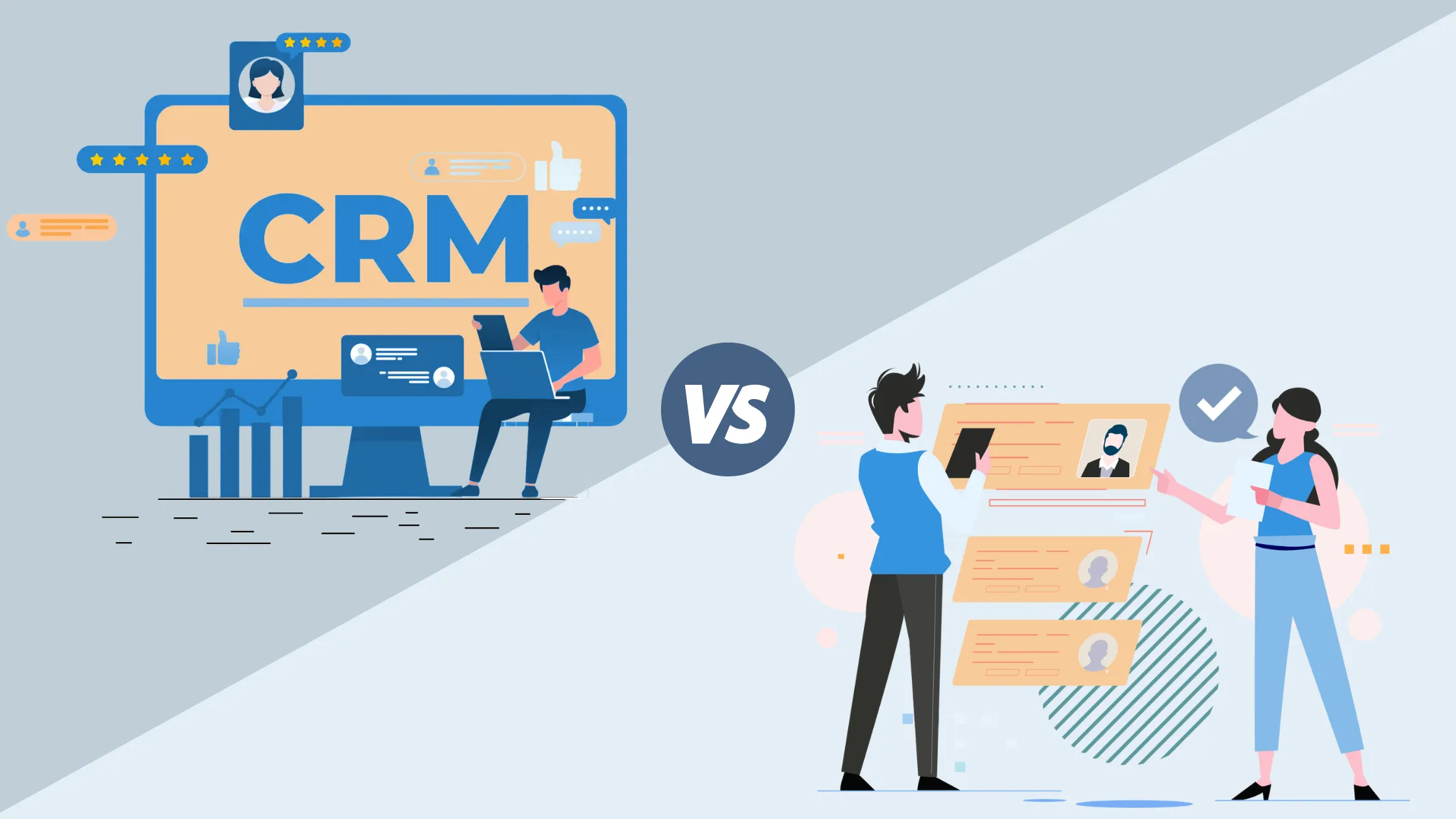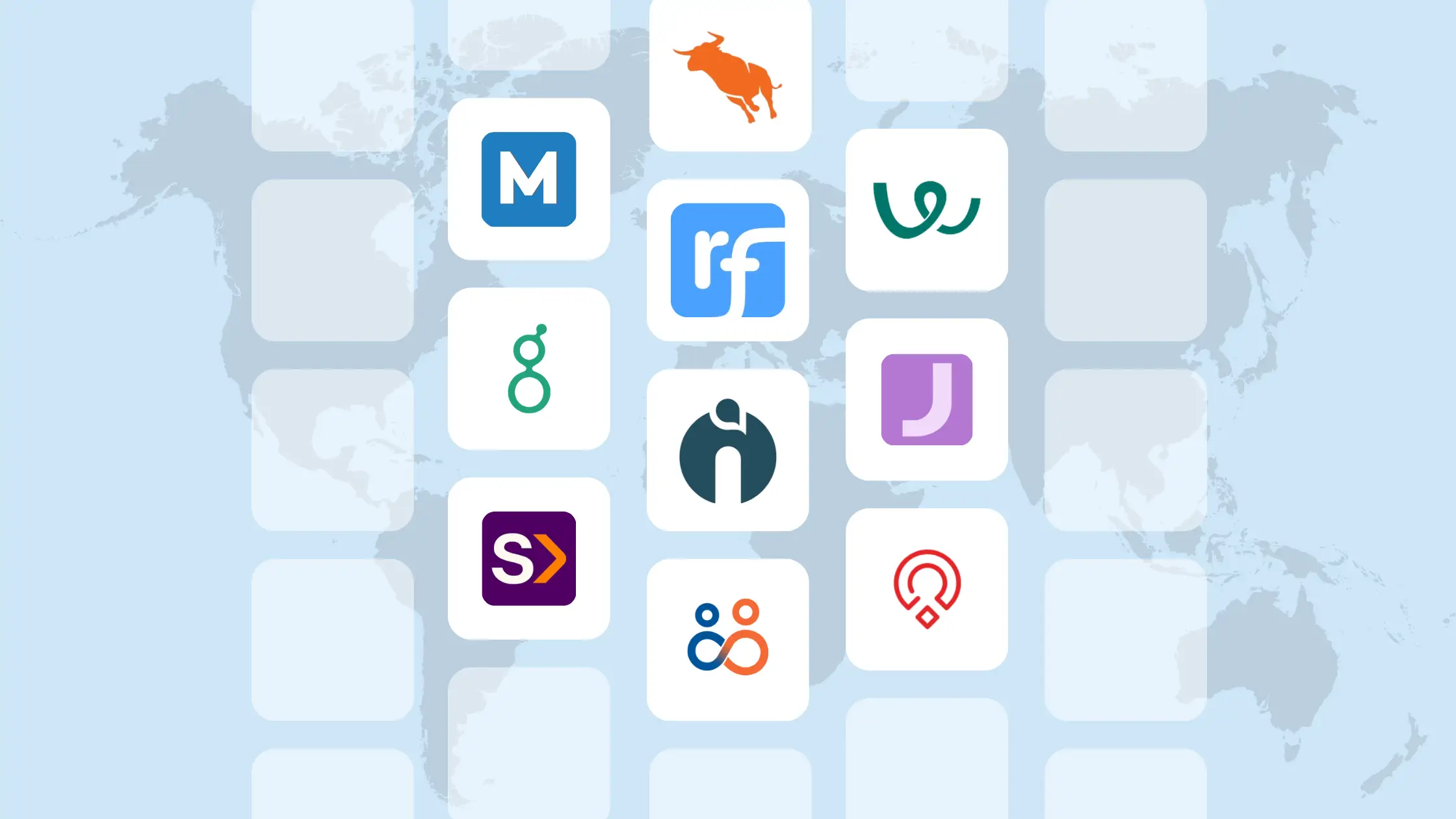In today's competitive talent market, simply posting job ads and waiting for people to apply isn't enough to find and hire the best candidates. Companies are now using recruitment tools to make hiring more manageable and to build strong connections with potential hires. Two of the most common tools are Recruiting CRM (Candidate Relationship Management) and ATS (Applicant Tracking System). But how do you know which one is right for your business? This guide will explain each tool's differences, advantages, and best uses to help you choose wisely.
What is a Recruiting CRM?
A Recruiting CRM is a tool that helps create and maintain relationships with possible candidates over time. It's like the marketing engine of recruitment. CRMs allow recruiters to proactively engage with passive candidates, nurture talent pipelines, and maintain strong connections with top talent before they're ready to apply for a position. To know more about it you can explore our comprehensive guide to Recruiting CRM.
Key Functions of a Recruiting CRM
-
Talent Pool Management: Groups and organises potential candidates into categories for future job openings.
-
Engagement Tools: Allows sending personalised emails, newsletters, and updates to keep candidates engaged.
-
Employer Branding: Highlights the company's culture through specific content and messages.
-
Analytics and Insights: Monitors how candidates interact to improve communication strategies.
A Recruiting CRM is perfect for staffing and recruiting agencies that want to build lasting connections and find potential candidates efficiently.
What is an Applicant Tracking System (ATS)?
An ATS (Applicant Tracking System) is a tool for automating and organising recruitment. It simplifies everything from posting job openings to hiring candidates, helping to manage many applications and working smoothly with the hiring team.
Key Functions of an ATS
-
Job Posting and Sharing: Shares job openings simultaneously on various websites and social media.
-
Resume Parsing: Automatically pulls out and organises details from candidate applications.
-
Workflow Management: Tracks applicants through multiple stages, from screening to onboarding.
-
Legal Compliance: Makes sure hiring follows all required laws and rules, such as EEOC and GDPR.
An ATS is especially useful for large HR teams that handle many job openings and must comply with hiring laws.
Recruiting CRM vs ATS Features Comparison
The primary distinction between Recruiting CRM and ATS lies in their core purpose and focus:
Core Focus: Recruiting CRM focuses on building strong, lasting relationships with candidates. It aims to connect with and develop a pool of potential talent, especially those who aren't actively looking for jobs, and keeps them interested until they're ready to apply. In contrast, ATS is more about managing the hiring process efficiently and handling the steps and details involved in recruiting.
| Feature | Recruiting CRM | ATS |
| Core Focus | Building and maintaining long-term relationships | Managing and automating the recruitment process |
| Candidate Sourcing | Advanced tools for sourcing and engaging passive candidates | Basic sourcing features primarily for active applicants |
| Lead Nurturing | Personalised email campaigns, candidate re-engagement | Not available |
| Job Posting | Limited job posting functionality | Extensive job board integrations |
| Applicant Tracking | Minimal focus on applicant tracking | Comprehensive tracking of applicants' statuses |
| Talent Pipeline | Designed to manage and grow a talent pipeline | Focused on immediate hiring needs |
| Compliance | Limited compliance features | Robust compliance and legal adherence tools |
User Experience
Recruiting CRM: Recruiting CRM is built to be easy to use, focusing on personalizing communication and engagement. It helps you tailor your outreach and organize candidates by their skills, making it great for staffing and recruiting companies that want to keep in touch with candidates over time.
ATS: ATS is designed to be efficient with simple workflows for managing job applications. It automates tasks like resume parsing and interview scheduling, reducing the need for manual work. This makes it ideal for corporate HR teams handling large-scale recruitment.
Integrations
Recruiting CRM: Recruiting CRM connects with tools like social media, email marketing, and CRM systems to enhance communication with candidates. It focuses on improving outreach and finding candidates more efficiently.
ATS: ATS integrates with job boards, assessment platforms, and HR management systems. It prioritizes automating tasks like job posting, screening, and tracking applicants.
Industry and Company Size Considerations
Industries
ATS: Commonly used in industries with high-volume recruitment needs, such as retail, hospitality, healthcare, and manufacturing. These industries rely on quick turnaround times and efficient hiring processes to meet immediate staffing demands.
Recruiting CRM: Often used in fields where building strong connections and attracting skilled people over time is essential, like tech, consulting, education, and companies that find top executives.
Company Size
Small Businesses: Small businesses find an ATS helpful if they want to automate and simplify their hiring process without needing a full-time recruitment team.
A Recruiting CRM can be a good tool for small companies looking to improve their reputation as an employer and prepare a pool of potential candidates for future needs.
Medium to Large Companies: Usually, both tools are needed. They use an ATS to handle tasks more efficiently and a CRM to manage important relationships strategically.
Big companies in tough markets often combine both systems to get the best results in hiring.
Which Is Better for Your Business?
The choice between a Recruiting CRM and an ATS largely depends on your business's hiring strategy, industry, and size:
Choose a Recruiting CRM if:
-
You want to actively create a pool of potential hires and connect with people not actively looking for jobs.
-
Employer branding and candidate engagement are priorities.
-
You're a recruitment or staffing agency focused on finding talent for the long term.
Choose an ATS if:
-
You need to handle a large number of job applications quickly and effectively.
-
Compliance and workflow automation are critical.
-
You are part of a company's HR team dealing with urgent and enormous hiring demands.
Integrating both tools often gives the best results for businesses with different needs. A Recruiting CRM can manage long-term relationships and branding, while an ATS helps make the hiring process smooth and efficient.
How to Choose the Right Solution?
-
Understand Your Needs: Determine whether you're looking to build long-term relationships with candidates or need to hire quickly.
-
Compare Features: Check if the tools match your hiring goals. Do you need tools to reach out to candidates (CRM) or automate tasks (ATS)?
-
Consider Scalability: Make sure the tool can handle your business's future hiring needs as they change.
-
Check Integrations: Ensure the tool works well with your current HR software, job boards, or marketing tools.
-
Look for Support: Find out how good the vendor's customer service, training, and help resources are.
Why Choose iSmartRecruit?
iSmartRecruit is a complete solution that combines both ATS and Recruiting CRM features. It's built to meet the needs of corporate HR teams and staffing agencies, offering a balance of operational efficiency and strategic engagement.
Key Benefits of iSmartRecruit
-
All-in-One Solution: Combines tools for tracking applicants, ensuring compliance, and automating workflows with features for managing candidate relationships and talent pipelines.
-
Customisation: Customisation allows you to adjust workflows and settings to suit your HR team's or recruiting agency's unique needs.
-
Advanced Analytics: Provides clear, data-based insights into hiring performance, candidate engagement, and pipeline progress.
-
Scalability: Works for small and large businesses, making it a flexible option for growing organisations.
-
Enhanced Candidate Experience: Improves communication, personalises interactions, and boosts your employer brand.
Whether handling a high volume of hiring or building long-term relationships with candidates, iSmartRecruit gives you the tools to succeed. It's the perfect choice for businesses looking to improve their recruitment strategies with modern technology.
Conclusion
Recruitment CRMs and ATS tools have different but supportive roles. A Recruiting CRM helps create lasting connections and interact with candidates, making it great for staffing agencies. On the other hand, an ATS simplifies high-volume hiring and ensures compliance, making it ideal for HR teams. iSmartRecruit combines both Recruiting CRM and ATS features, providing a full recruitment solution. Want to improve your hiring process? Try iSmartRecruit today!










